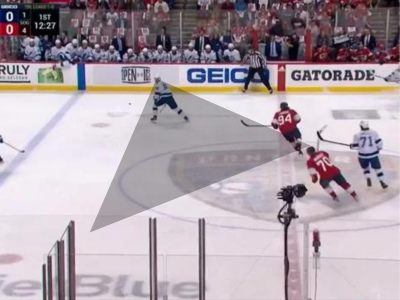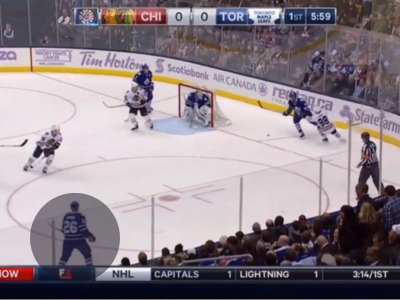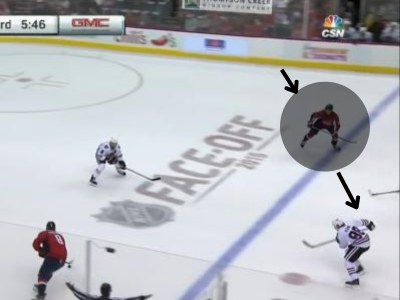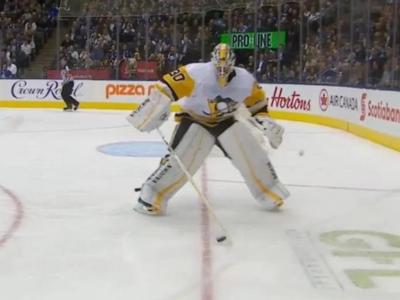The Breakout in hockey is an integral part of the sport, and often goes unnoticed due to its efficiency when executed properly. In this blog post, we delve into the key details that make breakouts successful and highlight the unique role each position plays. From defense to goalie, everyone has a part to contribute to the success of a breakout. Let’s dissect the game and unravel the intricate workings of this fundamental play.
Understanding the Concept of a Breakout

The breakout kick-starts a team’s transition from defense to a full-blown offensive. It’s the compelling game changer where teams can escape the defensive zone and transition to offense quickly.
While seemingly straightforward, the details within the concept of a breakout thrive on tactical movements and teamwork.
Hockey is made up of split-second decisions, and strategies implemented so everyone knows where each other is without overhandling the puck. From the defencemen who lay the groundwork, to the forwards and the centers who push the envelope further, to the goalie who silently safeguards the rear – each role is interconnected, each move a calculated stroke in the larger game plan.
Therefore, understanding the concept of a breakout goes beyond the basic premise of a defense-to-offense transition. It’s about dissecting the role of every team member, appreciating the tactical brilliance involved, and recognizing the immense teamwork that brings this play to life.
Strong Side D-men – Scanning & Deception

Being the first player back into your zone, typically defencemen are tasked with a crucial role: scanning the zone. Often misconstrued as simply identifying potential passing lanes, the essence of this task is far more significant.
It is, in fact, an act of strategic safeguarding. As they pivot back into their zone, their gaze sweeps across the rink. They aren’t looking for their team; their eyes are seeking out potential threats. They’re on the hunt for opposing players poised to intercept or those ready to launch an aggressive offensive.
Despite the fast-approaching forecheckers, a detailed scan can lend an edge of cunningness, enticing the forechecker towards a trap and creating an opportunity to counterstrike. This vigilance, coupled with the ability to quickly adapt, forms the foundation for the first move in an offensive transition.
The role of scanning by the strong side defenceman is therefore not just about identifying their teammates, but more importantly, it’s about anticipating and neutralizing potential threats, facilitating an efficient and successful breakout.
Weak Side Defensemen – Calls Out The Play
The role of the weak side defensemen demands quick action. Positioned in front of the net, they are the backbone of the defensive zone and the watchtower for all on-ice actions. They always think defense first, ensuring the slot is covered.
As their defense partner retrieves the puck, their responsibility extends beyond their territory. The weak side D-men transform into the on-ice conductor, commanding the play with succinct, clear instructions – ‘UP,’ ‘OVER,’ ‘WHEEL,‘ etc. It’s a high-intensity role that merges defense with strategic communication, requiring them to keep their ‘toes up the ice’ for a comprehensive view of the rink.
Their position in the slot is not a passive stance; it’s a tactical move, serving as a bulwark against potential attacks and an intelligence hub for their team. The transition from defense to offense often hinges on their strategic placement and effective commands.
Where to Position The Wingers

Wingers hold a critical position that can drastically influence the transition from defense to offense. The wingers must read and interpret the pressure on their defense, and adjust their positioning accordingly. This can range from dropping down close to the goal line to moving closer to the blue line.
Traditional positioning would place wingers on the half wall, precisely where the hash marks meet the boards. However, the modern game sees a shift in this positioning, reflecting the evolving dynamics of hockey. Today, wingers often place themselves midway between the top of the circle and the blue line.
This strategic positioning opens up the ice, creating more passing lanes to exit the zone and into the offensive territory. The key lies in their ability to anticipate, adapt, and align themselves strategically to optimize opportunities and enable a smooth, successful breakout.
The Centre – Low And Slow
The center plays a pivotal role as the last line of the defensive zone and the first thrust into the offensive realm. This balance is epitomized in their approach: low and slow. They remain low in their zone, providing crucial support to the defencemen while also offering an open option for a breakout pass.
Their presence near the slot area acts as a deterrent to potential attackers, guarding the ‘house’ while the breakout is initiated. Adopting a ‘slow’ approach doesn’t denote a lack of speed but rather strategic patience. They resist the urge to rush up the ice too quickly, ensuring that they are available for a pass from the defencemen or wingers if needed.
This dual role of being the protector of the defensive zone and a catalyst for the offensive strike encapsulates the essence of the center’s role in the breakout. It requires finesse and patience. Getting ahead of the strong-side winger can cause an odd-man rush back into your own zone very quickly.
Weak Side Winger – The Slasher

Navigating the ice as a weak side winger in a breakout calls for an aggressive yet calculated approach – one that’s best captured by the term ‘slasher’. Imagine this scenario: your strong side winger is pinned on the wall, needing more time. Enter the weak side winger or the slasher. This player has the ability to cut across the ice, slicing through the opposing defensemen. This slashing movement forces the opposition to retreat, creating room and time for the strong side forward.
Conversely, if the strong side forward is ready to initiate a pass, the slasher takes a different route. Instead of slicing across, they slash up the weak side dot lane, all the while keeping an eye out for the incoming pass. This zigzag route of the slasher can disorient the opposition and create openings for a quick and successful breakout.
This dynamic role demands impeccable timing, intense agility, and a keen understanding of the game’s ebbs and flows. The slasher, by definition, must be able to slash through uncertainty, create opportunities, and catalyze the shift from defense to offense in a blink.
The Often Overlooked Importance of the Goalie in the Breakout

It’s easy to overlook the goalie’s importance. However, their unique vantage point, covering nearly 200 feet of ice, lends them a distinct perspective. They have a broad view of the entire game, enabling them to anticipate plays and strategize accordingly. When the offensive ‘deposits’ or ‘dumps’ the puck in, the goalie has a significant task to handle – positioning the puck optimally for their defensemen. This act, although subtle, sets the stage for an effective breakout.
Moreover, the goalie’s communication skills play an instrumental role in navigating a successful breakout. Their warnings and directions can guide their teammates, preparing them for oncoming threats.
They’re like the on-ice control tower, scanning the game, providing alerts, and supporting the team in its transition from defense to offense. It’s an intricate role that balances tactical acumen, agile reflexes, and sharp communication, highlighting the goalie’s integral contribution to the breakout.
Next time you watch a game, take a moment to appreciate the goalie’s understated yet pivotal role in executing the breakout.
The Importance Of Communication
Communication on the ice is crucial in executing an effective breakout. It’s the oil that keeps the hockey machine smoothly functioning. It’s not just about barking out instructions, but more about fostering a level of understanding that allows team members to predict and adapt to each other’s movements.
Like a seamless conversation, communication during a breakout should be clear, concise, and timely. A defenceman shouting ‘RIM’ helps the winger anticipate the puck’s trajectory. The center’s call of ‘MIDDLE’ guides the wingers to a safe and open pass option. Even a goalie’s succinct ‘TIME’ can ease the pressure off the defenceman, allowing a few precious seconds to make a tactical move.
It’s more than just voice though. Eye contact, body language, even the tilt of a stick can send potent signals. Silent, non-verbal cues can be as effective, if not more, than shouted instructions. Remember, breakouts are not just about physical agility and strategic positioning, they’re about engaging in a dialogue – an on-ice conversation that can steer the game in your favor.
Perfecting the Breakout: Practice and Teamwork
Mastering the breakout is a test of time, patience, and persistent practice. It’s about building resilience under pressure, starting with a single forechecker and gradually adding more until you’re dealing with full 5on5 pressure.
It’s also about growing together as a team – understanding the unique style of your teammates, their strengths, and the best way to complement each other’s roles. Each pass, each shout, each glance has to be in sync to create a cohesive unit, ready to transition smoothly from defense to offense.
Remember, breakouts aren’t about individual brilliance but collective effort. Your team’s unity and cohesiveness on the ice can make or break the success of a breakout. So practice relentlessly, communicate effectively, and most importantly, trust in your team.

